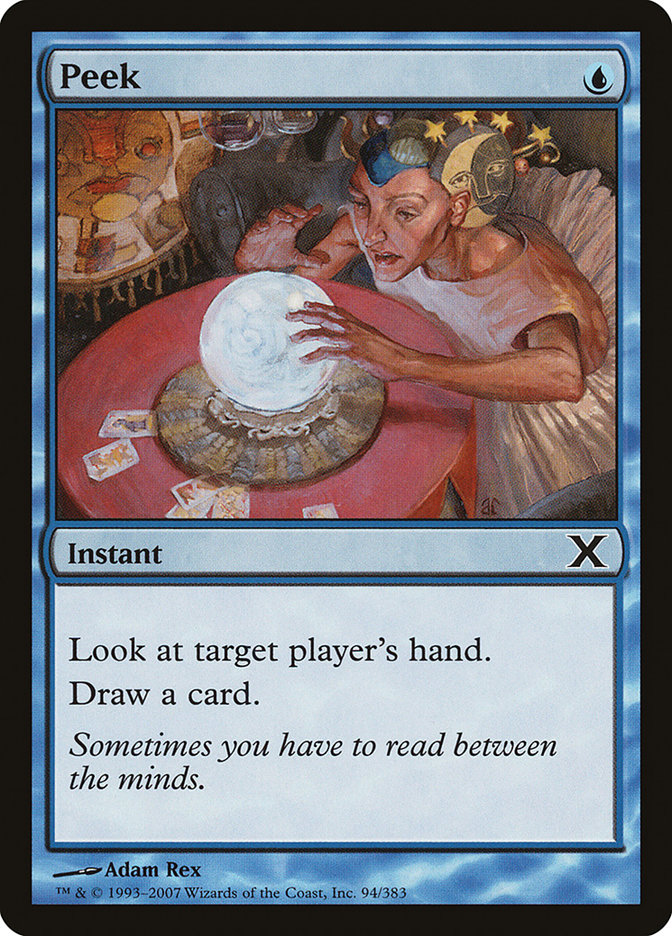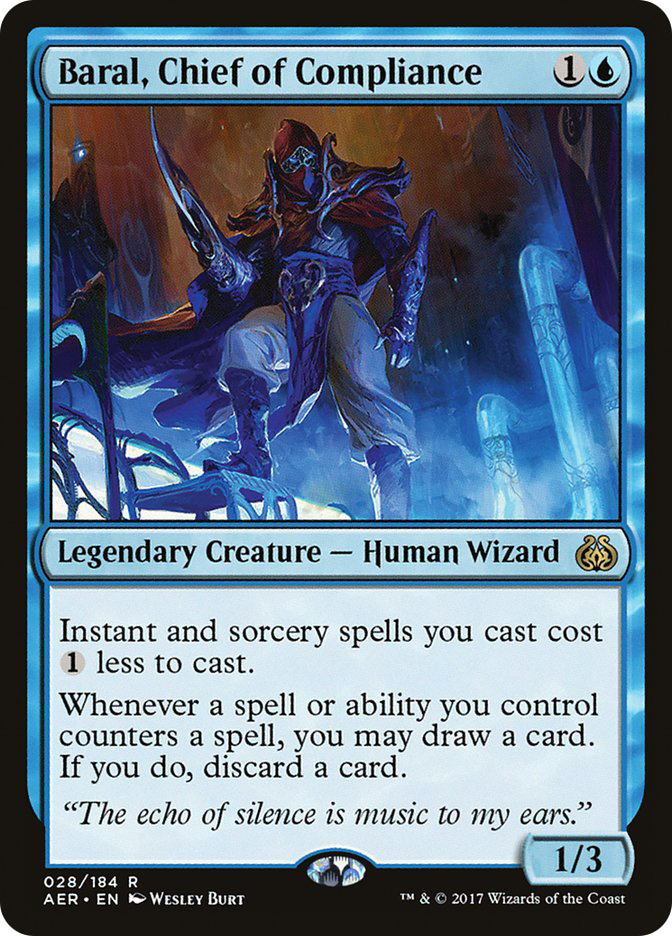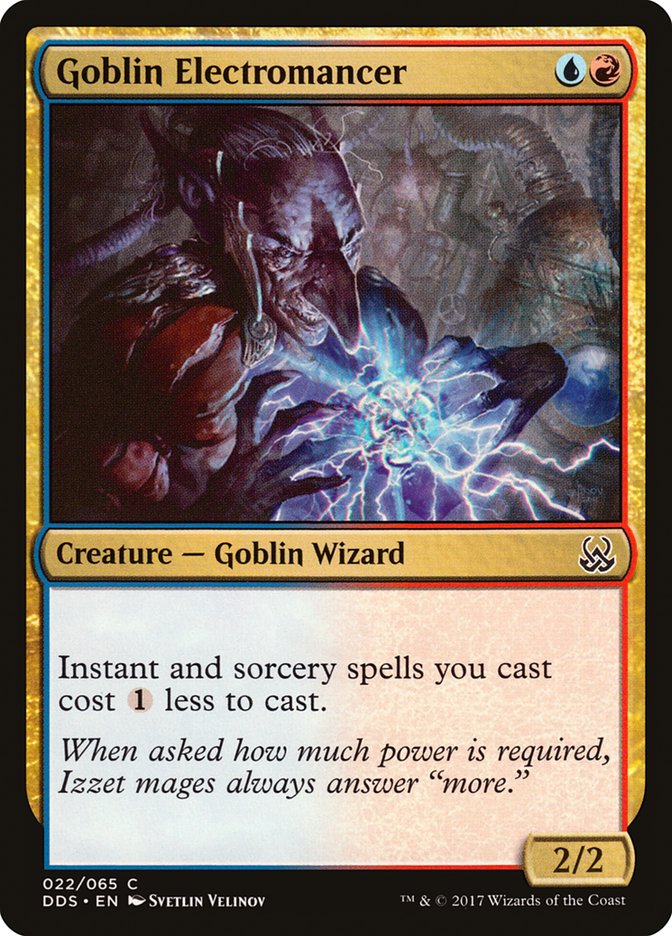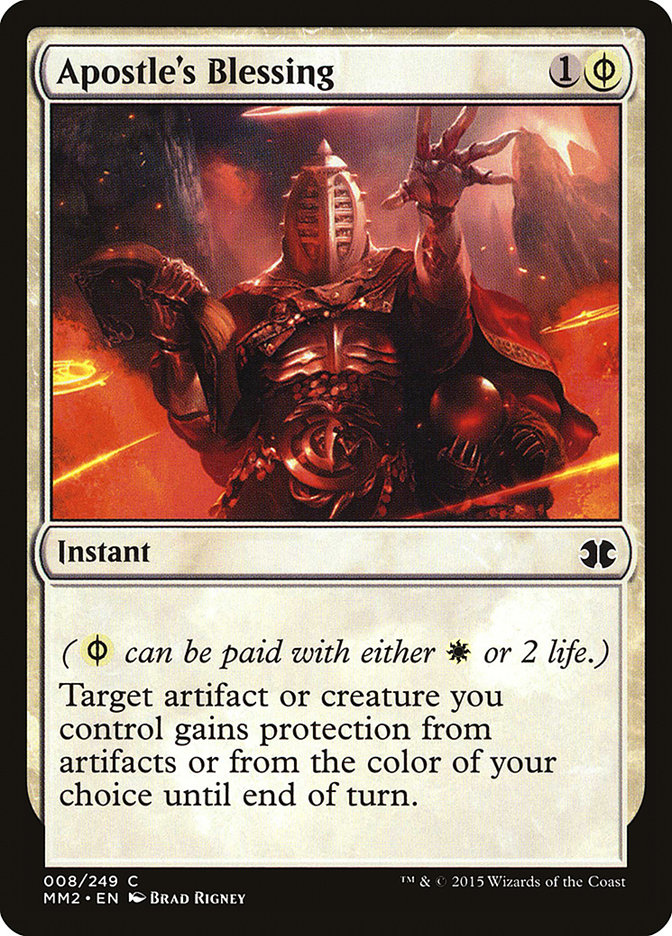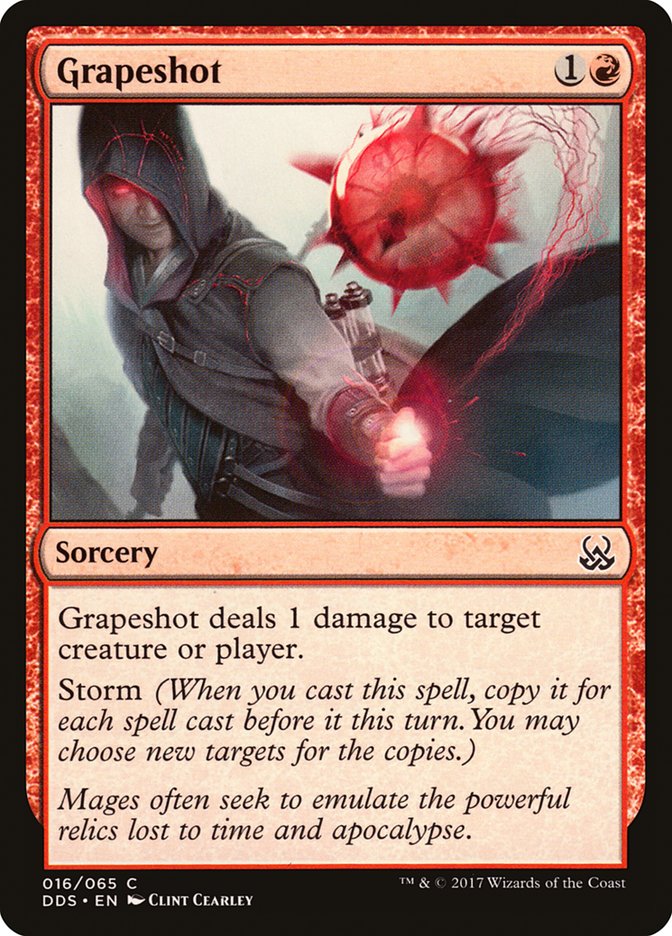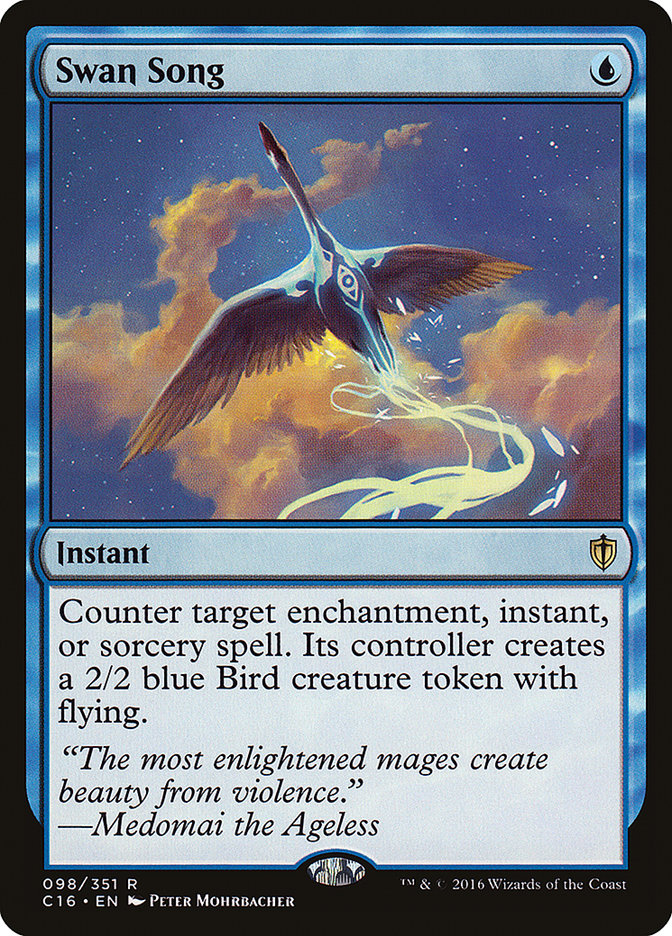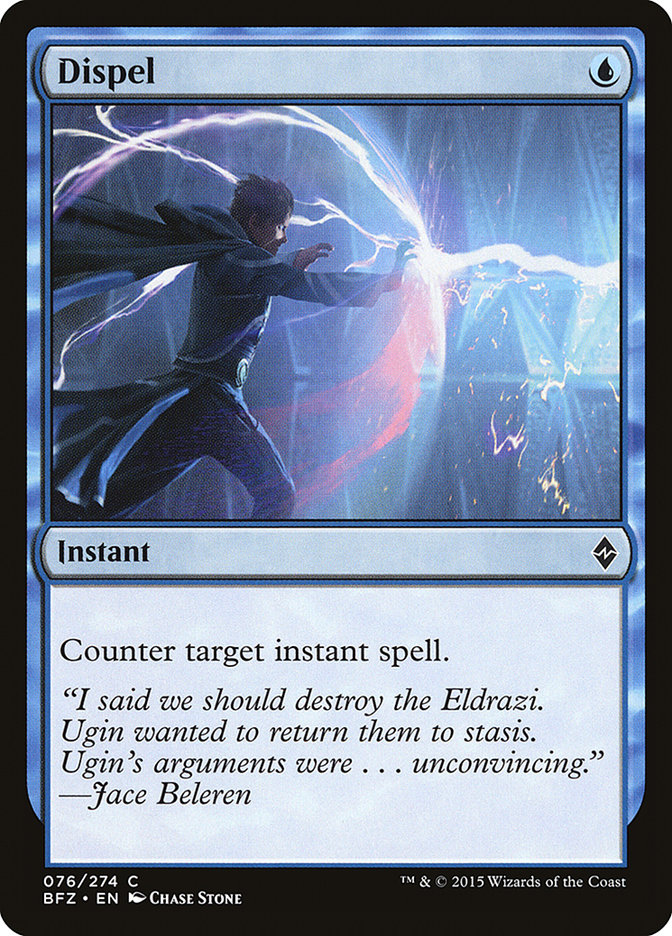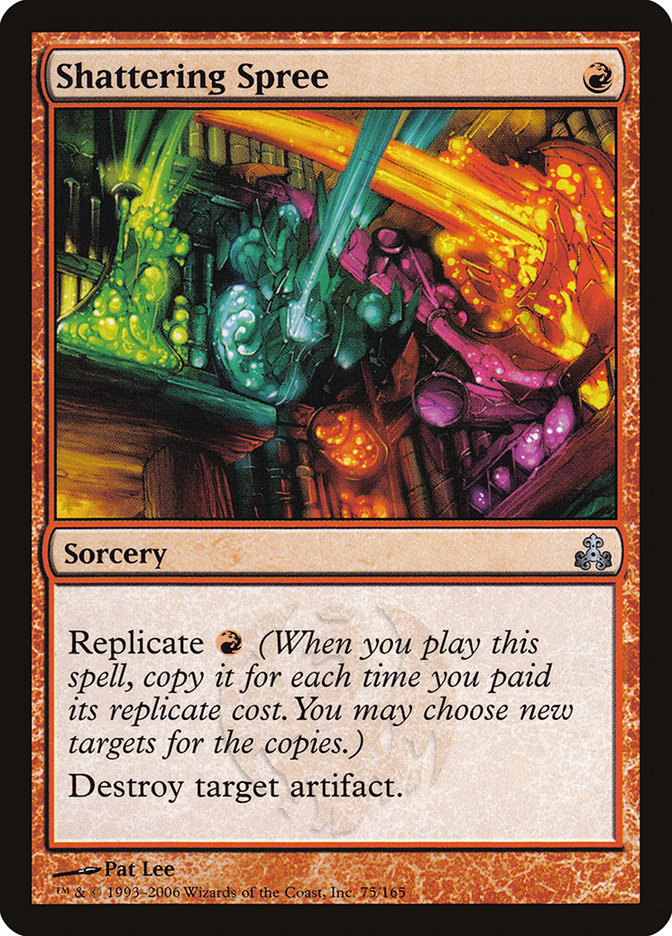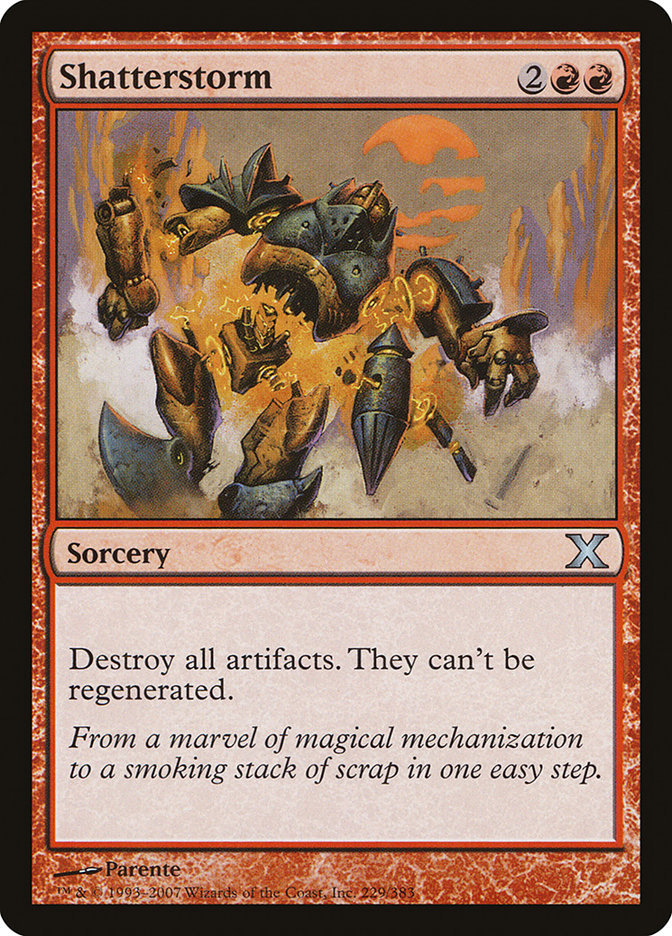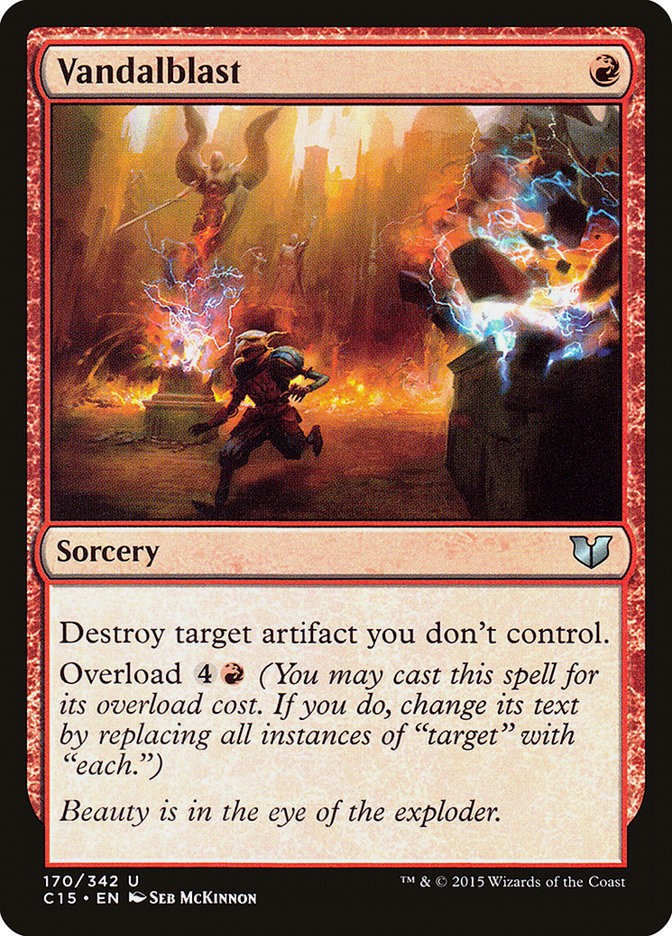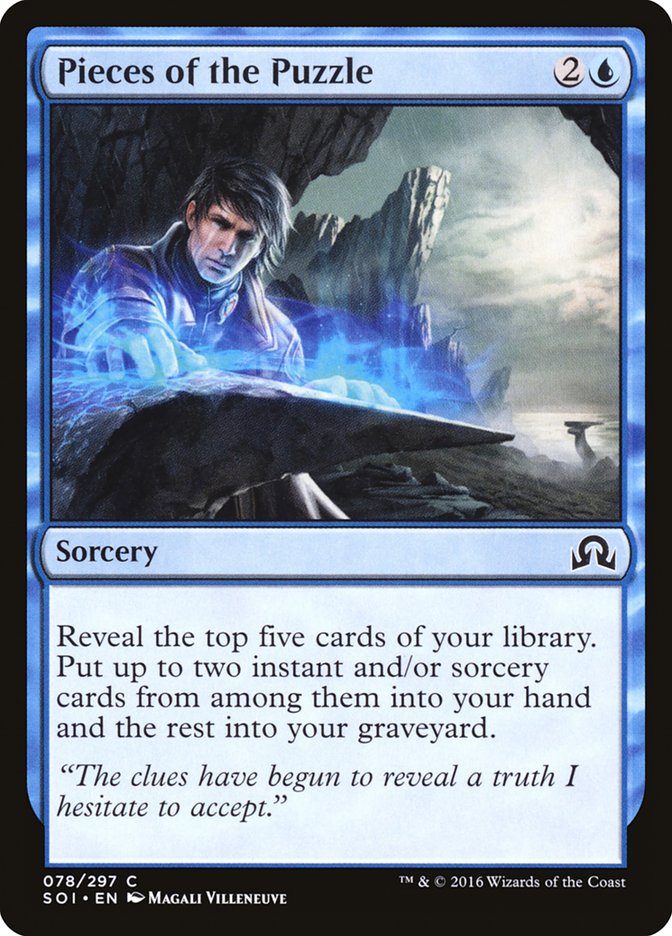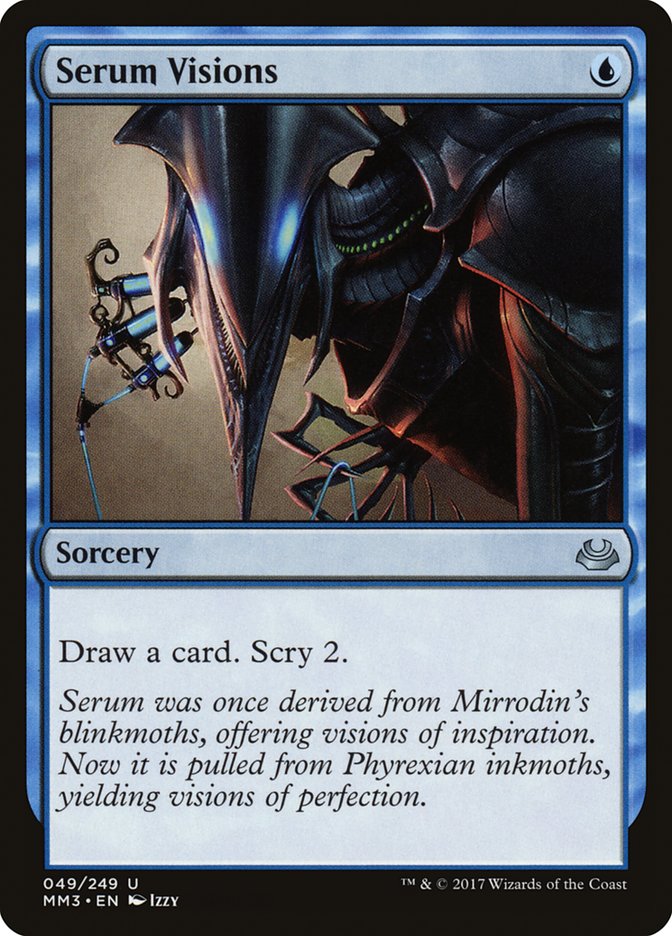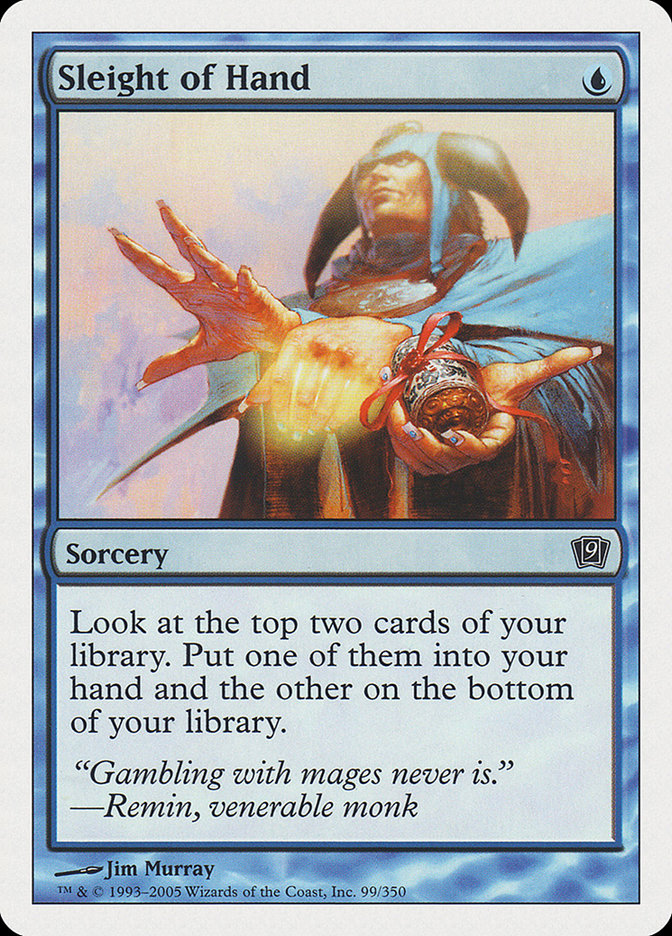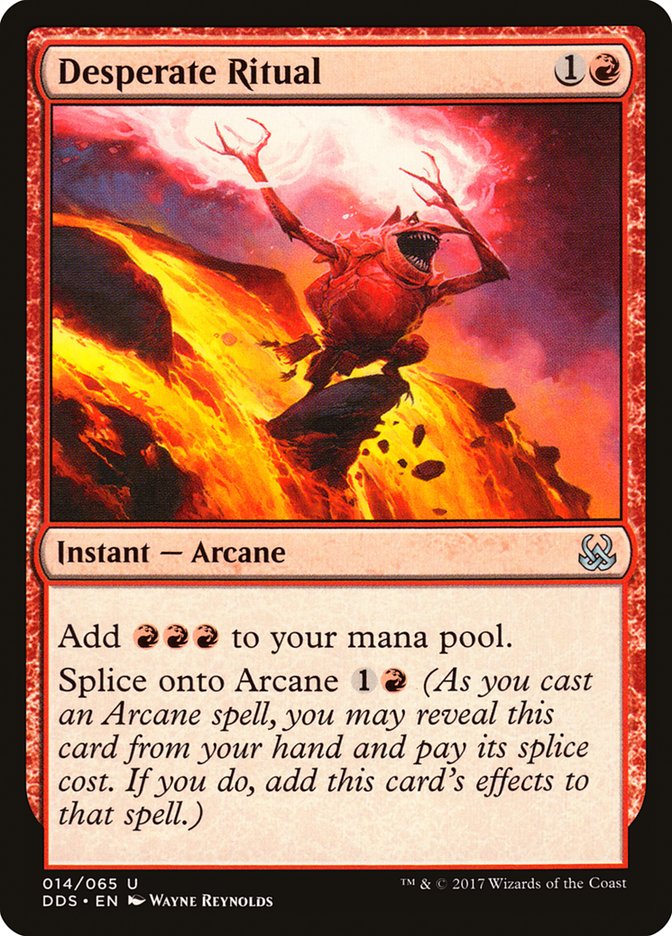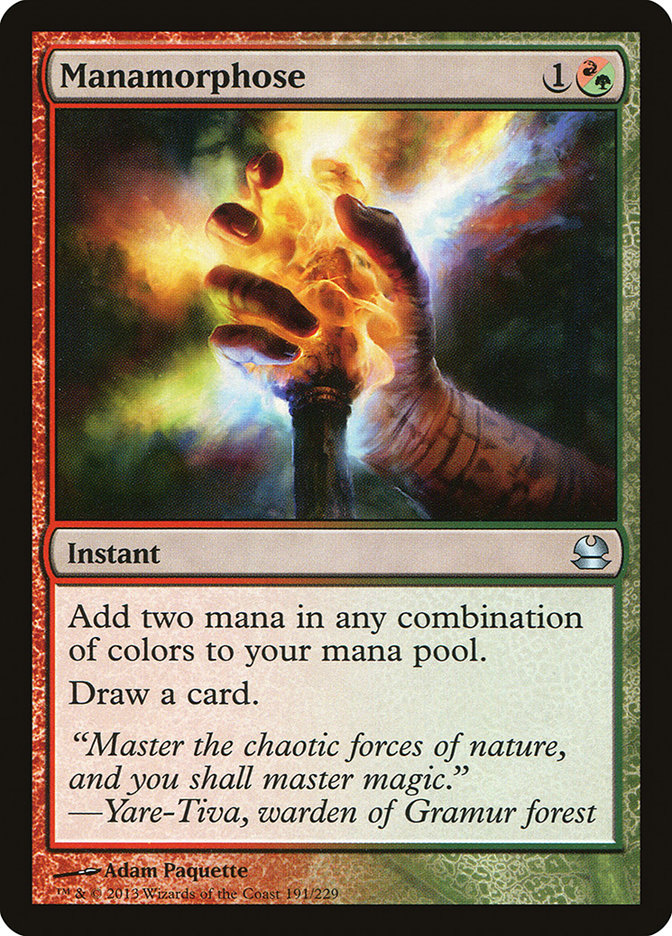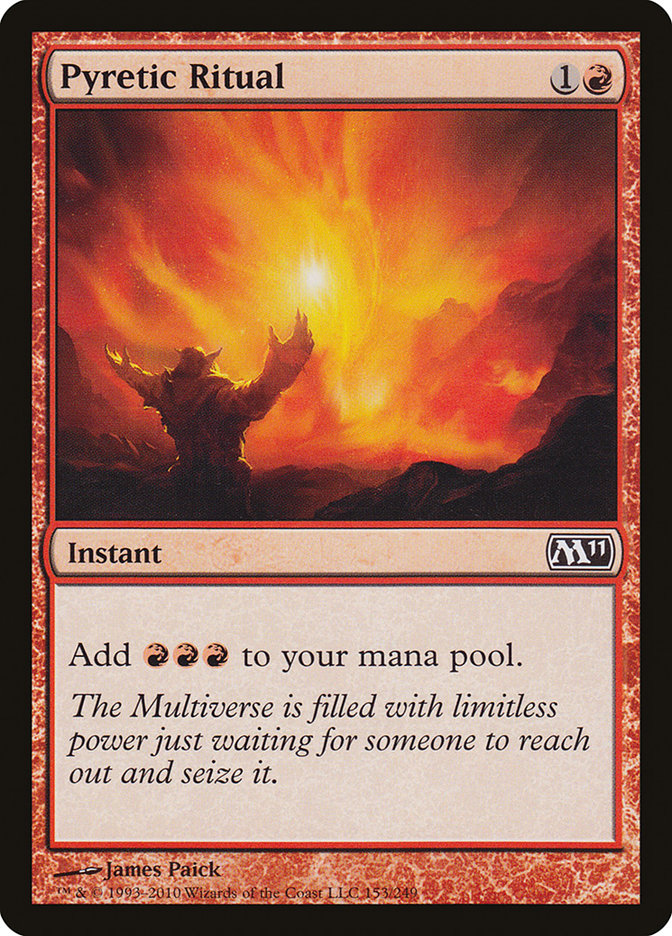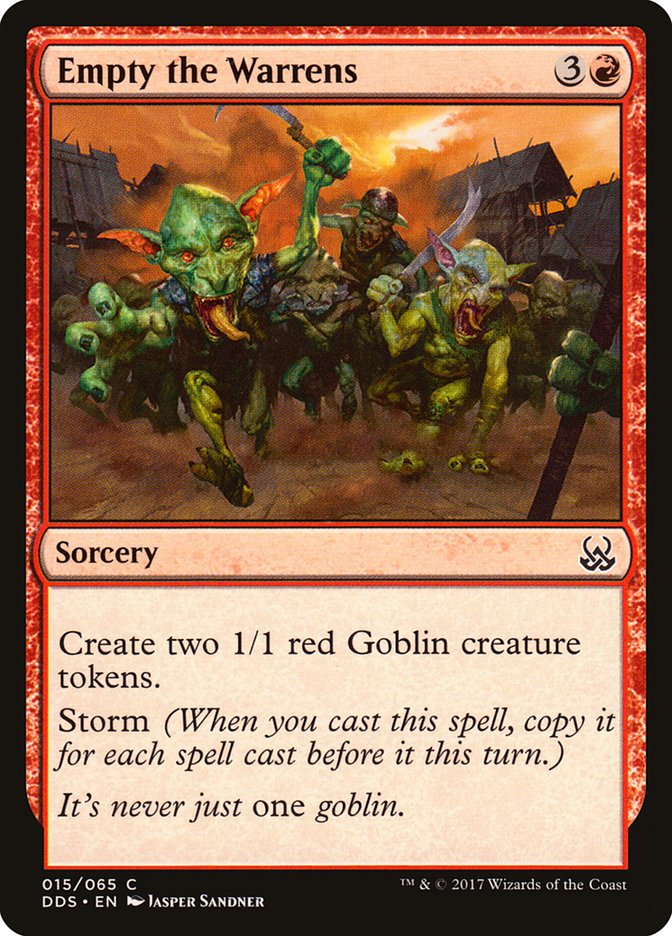Magic isn’t always about doing the responsible thing. Sometimes it’s important to go back and remember that Magic is a game.
For the last couple of weeks I’d been out of town and wanted to lock in on a single deck as a result. I was incredibly experienced with Grixis Death’s Shadow and felt that, even if people were playing hate, I could maneuver through most of the field. Knowing that I’d be away from most of my collection for a couple of weeks, I packed a couple of deckboxes with roughly 150 cards that could feasibly be registered in a Grixis Death’s Shadow deck.
On the fourteen-hour car ride to #SCGNY, I hammered out some specific choices related to sideboarding and planning for matchups and was pretty happy with what our group of four was planning to register.
For the decklist crowd:
Creatures (16)
Lands (19)
Spells (25)

The specifics of the list aren’t particularly important. What is relevant to this is that the Modern portion of #SCGNY was absolutely miserable. Playing Standard was a blast and I wanted to play more of it, but I had a tournament to play in a few days, and a Modern tournament at that.
For most of the week I waffled back and forth on what changes to make and how to not have a repeat experience of the previous event when it hit me: I could try to play something else. Playing another deck felt somewhat irresponsible, and rather than try to balance “reasonable” with “enjoyable,” I made a decision: aim for fun.
With that, I decided to play the flashiest competitive deck I could think of:
Creatures (8)
Lands (18)
Spells (34)

My choice to explain how I arrived at Storm isn’t an accident; a few weeks ago, I published an article that touched on picking up a new deck for the first time. Most of the information in the article was related to answering the questions of other people, rather than presenting the method that I use to study up for a tournament.
Rather than repeat the same model, it seems more useful to explain everything I did to pick up a deck for the first time and make a bit of cash at an event with approximately 500 people.
Research
After locking in on wanting to play Storm, the first step I took was looking to see if there were people in the Magic community. Luckily, #SCGNY had both Caleb Scherer and Oliver Tomajko finishing the Swiss with records of 12-3.
Creatures (7)
Lands (18)
Spells (35)
- 4 Sleight of Hand
- 4 Serum Visions
- 3 Peer Through Depths
- 4 Gifts Ungiven
- 4 Desperate Ritual
- 3 Grapeshot
- 4 Manamorphose
- 4 Pyretic Ritual
- 2 Past in Flames
- 3 Thought Scour
Sideboard

Creatures (8)
Lands (18)
Spells (34)

I reached out to Scherer for some information, and there was luckily a piece he wrote on his approach to playing Storm against what other people were doing in Modern. It was incredibly up to date and I can’t recommend it enough.
Due to my being somewhat skeptical of the fetchless manabase approach that Scherer was advocating, the next step was reaching out to Oliver Tomajko and picking his brain for a bit on his methods for sideboarding with the deck.
Most of what I’d gathered from the two of them could be summed up in a few points:
- When sideboarding, never touch Rituals.
- Taking out one Past in Flames is common, but having a single copy to grab with Gifts Ungiven is important.
- Creatures are easy to sideboard out, and which creature should come out changes based on the removal the opponent is playing.
- The most common flex slots are generally going to be the more mana-intensive and situational cards. Peer Through Depths and Grapeshot #3 / Empty the Warrens #1 are what I’m looking at here.
Deck Construction
Similar to how I broke down the Death’s Shadow core recently, it seemed there were a handful of decisions to make when building Storm, and I’ll explain which direction I erred in each of them, and why:
Both iterations of Storm tend to play eleven to twelve cantrips, with the primary decision being between the efficiency of Peek versus the versatility and heightened mana cost of Remand.
Caleb Scherer has been continuously advocating for a fetchless manabase in Gifts Storm for a while now, and it makes sense. It helps count cards and increases the power of the scrys netted from Serum Visions and Sleight of Hand. In this version of the deck, Peek is more powerful, with the primary reason being that the permanence of scrys increases the power of a random card off the top of one’s library. This compounds with the idea that Scherer’s list tends to play with more information available to it (relative to the cards it has available) and Peek plays to that strength, giving the Storm pilot an idea of what it is they have to play against as well.
I ended leaning towards Remand. Remand shines against the big-mana decks and a lot of the midrange-y things that people are doing in Modern. After an Eldrazi Tron mirror in the finals of #SCGNY, it felt important to have a way to Storm through a Relic of Progenitus as well. A trick out of the Storm 201 playbook is Remanding one’s own Grapeshot in order to cast two copies of the storm spell in the same turn, effectively halving the number of spells that must be cast in order for said Grapeshot to be lethal.
Part of my preference is also rooted is in the opinion that the fetchless version of Storm doesn’t have as much that it can do with the information garnered by Peek. A nice bonus of Remand is that it can be cast for a single mana to protect Baral, Chief of Compliance or Goblin Electromancer and forces the opponent to cast whatever removal spell it is that they have twice. This doesn’t even get into how helpful it is to place a squeeze on the opponent by casting a creature and passing the turn before they’re planning to be proactive (via casting a Primeval Titan or similarly costly threat), knocking them off-balance by putting them in a position in which they either play their spell into a Remand or eat an important turn (sequencing-wise) trying to interact with what the Storm deck is doing.
Today’s Storm lists waffle between seven cost-reduction creatures and eight, and it seemed relatively natural to play the full eight. The draw to Storm is the power level of the deck, and a creature is the difference between playing with cards that are reasonable in Modern versus Dark Rituals, Rite of Flames that cantrip, and Yawgmoth’s Will.
There are certain types of cards in Magic that it is possible to get clogged on, but they’re so powerful that the number of games where that redundancy pays off outweighs the number of games lost from choking.
This card is really cute. It’s a zero-mana way to protect a creature from a removal spell.
This card is too cute. Do not play it. It cost me three different games over the course of the tournament, and it’s counterproductive in how many of the matchups that it is good against are approached*. I regret registering this card in my deck.
* See: Scherer’s article on Storm, specifically where he details the sideboarding strategy for Death’s Shadow. I used it and lost a single game to Death’s Shadow all weekend.
All of that being said, this card was in the deck under the same logic that games with a creature on the battlefield are wildly different from the ones without. Playing eight creatures and a spell to protect them pushes the deck further into an area where it’s possible to fizzle due to a glut of not-combo on combo turns.
I chose to play three copies of Grapeshot over the two-and-one Grapeshot / Empty the Warrens split in effort to have a more streamlined maindeck. At the time of building, it seemed that the extra copy of Grapeshot would be more useful when trying to kill people pre-sideboard (in part due to the aforementioned influx of Relic of Progenitus).
Another draw to Grapeshot over Empty the Warrens is that it can act as interaction against some number strategies in Modern. I won my Round 9 feature match in part due to the fact that I could use a small Grapeshot to wipe an Affinity player’s battlefield on the second turn despite me being unable to combo completely. The time that the play bought my ended up being enough to Gifts Ungiven for the combo pieces I was missing and win before dying to the opponent’s metal militia.
Getting Thalia, Guardian of Thraben off the table is also an enormous bonus.
Despite Kazu Negri winning the entire tournament with a pair of Dispels in his sideboard, the laundry list of cards that are worth countering with a Swan Song (that Dispel cannot hit) is staggering enough that I don’t think I could be convinced that Swan Song is wrong.
Just a few inductees in the Hall of “Thank God This Is a Swan Song” include:
This doesn’t even begin to list the corner-case scenarios in which it’s beneficial to counter your own spell and generate a flying attacker or blocker. It came up three different times in the tournament and I was impressed every single time.
Shattering Spree was the choice in this case because By Force with an X value of one can’t destroy a Chalice of the Void on two. Shatterstorm always costing four is pretty rough, and Vandalblast being unable to destroy a Chalice on one is an enormous turnoff. Not to mention it requires there to be six not-Chalice of the Void artifacts on the table for it to be better than a Shattering Spree.
Some of the post-sideboard plans in the deck involve turning into a deck that leans more towards an odd midrange strategy, and Pieces of the Puzzle is oftentimes better than Gifts Ungiven in those scenarios. The card is generally impressive in its own right, but against something like Grixis Death’s Shadow, it plays a crucial role.
Sequencing
In a linear engine-based combo deck, sequencing is the name of the game, and there’s likely an entire article worth of material here, but understanding why certain cards are played before others goes a long way in figuring out how to play a deck on the fly.
I’ve written this article before! I’ll try to rapid-fire this bit for framing’s sake in the article:
- If you aren’t comboing, play Serum Visions before Sleight of Hand. It makes it less likely that you’ll spend draw steps on cards you don’t want.
- Mid-combo, it is generally going to be better to play Sleight of Hand, because it’s harder to benefit from the scry that Serum Visions grants.
- The exception to the previous point is when digging for a specific card and when multiple cantrips can be cast. Serum Visions into Sleight of Hand goes one card deeper than Sleight of Hand into Sleight of Hand.
Always lead on Pyretic Ritual. There isn’t an enormous benefit to holding copies of Pyretic Ritual, as the card doesn’t get much better in multiples and doesn’t gain power as the combo progresses.
Desperate Ritual is more complicated. Because of the Splice onto Arcane mechanic, there’s a balance of making sure you have enough mana, and holding Desperate Ritual until the last second to try to splice one onto another. It’s hard to run out of mana when there’s at least seven red mana for a Storm player.
Manamorphose is generally going to be used to filter red mana into blue, but the sequencing is important. Trying to get the most out of Manamorphose’s cantrip is a big deal, and it isn’t uncommon to try to sandbag a Manamorphose until after a Serum Visions has resolved before it.
What’s the most common denominator in all of these situations? Value.
Even in a combo deck that doesn’t play “regular” Magic, consistently comboing involves eking out dozens of little percentage points by playing cards in the proper order in the hopes of putting the odds of fizzling as closer to zero as possible.
Playing Desperate Rituals later than Pyretic Rituals can translate to generating more mana than one would otherwise have, which can then translate to having the ability to cast more cantrips, cantrips that will help keep things going, and things which will eventually point the requisite number of Grapeshots at the opponent’s face.
Sideboarding
For those not in the know, my “day job” is coaching players about Magic via Skype, and the most common discussion topic among clients is easily sideboarding. When it comes to sideboarding with a new deck on the fly, the best thing I can say is to figure out what cards are integral to the strategy and which cards are removable.
Getting fancy is rarely the correct move; otherwise it wouldn’t be labeled “fancy.” Sideboarding in a matchup comes down to trying to figure out what the opponent will do against you, and countering that plan. Sometimes that means changing the cards in your deck into cards that will better answer what the opponent is doing; in decks like this, it generally means making it harder for the opponent to counteract what we’re doing.
Empty the Warrens is the type of card that sends a handful of signals in both its inclusion in the deck and what the opponent can gather from it.
When including it in a deck, it communicates that despite being more fragile than something like Grapeshot, it’s assumed the opponent can’t beat however many Goblins are produced, either by using the Goblins as recurring sources of damage or Emptying a very large set of Warrens.
The opponent can generally gather that a Storm player with Empty the Warrens in their deck has removed some of their other payoff cards so they don’t end up with a hand full of gas without a match, and that the Storm player is generally planning to win with a smaller Storm count.
How? Let’s combine a couple of points from the section of what the Empty the Warren’s caster is considering.
The Goblin tokens being recurring sources of damage means that they don’t need to create a Storm count as high as one that Grapeshot demands. If it did, it would be a lot worse. Empty the Warrens requires an untap step for the Goblins to deal damage, and the opponent can also interact with Goblin tokens more easily than they can interact with twenty Gut Shots. This means that the Empty the Warrens player assume that the Goblins will be worth multiple points of damage and that they will be good enough to deal the damage that they won’t be dealing with a larger storm count.
For these reasons, when bringing in Empty the Warrens, the first cards I found myself reaching to cut were a copy each of Grapeshot and Past in Flames. If my gameplan against a deck is to have a smaller Storm count, the extra Grapeshot and the number of spells provided by Past in Flames tend to be less relevant.
Sometimes sideboarding is meant to accommodate a shift in plans.
In decks like R/W Prison, Blood Moon is one of many cards intended to lock an opponent out of a game. In U/R Gifts Storm? It’s merely a way to buy time.
Blood Moon is frequently used to rule out certain archetypes “free wins” that they gain from their lands.
So if the plan is to buy time, what cards are to be sideboarded out?
The first card I look towards is Apostle’s Blessing. If the cards we’re looking to interact with are lands, and it is by implementing a strategy that prevents the opponent from playing cards, Blessing loses a lot of its value.
The next card I look to shaving is a Peer Through Depths. Peer Through Depths is fantastic at providing the deck with velocity, but what it isn’t good at doing is being cast with a Blood Moon on the table. If the plan is to create additional turns via forcing the opponent to stumble on their mana, the most overcosted and clunky cantrip in the deck is likely the first card on the chopping block, as it doesn’t quite line up with what it is we’re trying to do post-sideboard.
Both of these changes are against decks that are relatively non-specific but are meant to illustrate points that are reasonable within a vacuum. When sideboarding, it’s important to make decisions deliberately, and consider why a decision is being made as you make it. Not all of these decisions will be correct every time, but they are great at painting broad strokes for the sake of being a teaching tool.
Homework
All of these points are to bring it back around to one original point: think. The biggest divide that I tend to see between good players and great players is that decisions are made with deliberation.
Even when picking up a new deck for the first time, there’s going to be a reason that deck is the one picked up, which can translate to seeking resources based on that motivation, and that in itself can be converted to the motivation to make certain kinds of decisions over other ones.
Work to figure out what a deck wants to be doing, and then it’s simply a matter of playing the cards in the order that makes it happen.


